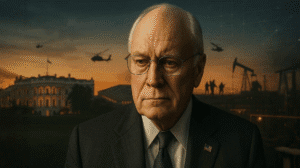Within just three days, U.S. President Donald Trump met with both Russian President Vladimir Putin and Ukrainian President Volodymyr Zelenskyy, along with a host of European leaders, in what has become one of the most intense bursts of diplomacy since the Ukraine war began. The first encounter took place on August 15 at Joint Base Elmendorf-Richardson in Anchorage, Alaska, followed by a high-profile White House summit on August 18. The back-to-back meetings underscored Trump’s attempt to position himself as the central broker of peace, but they also highlighted the fragile and contradictory nature of the emerging diplomatic framework.
The Alaska meeting between Trump and Putin was as symbolic as it was controversial. Greeted with a red-carpet welcome, Putin arrived in the United States despite being under an International Criminal Court arrest warrant. The leaders spoke behind closed doors for nearly three hours before briefly addressing the press. Reports suggested that Putin floated a proposal for Ukraine to cede Donetsk in exchange for freezing the battlefront, an idea Kyiv has repeatedly rejected. Trump, meanwhile, signaled a shift in his position by moving away from the demand for an interim ceasefire and instead advocating for what he called a “comprehensive peace deal.” Although no concrete results emerged, Trump hailed the discussion as “very productive,” giving it a personal rating of “10 out of 10.” Critics, however, argued that the meeting was more theater than substance, lending legitimacy to Putin while producing no immediate concessions.
Just three days later, the diplomatic focus shifted dramatically to Washington, D.C., where President Zelenskyy arrived to attend a major summit at the White House. He was joined by European leaders, including British Prime Minister Keir Starmer, French President Emmanuel Macron, German Chancellor Friedrich Merz, Italian Prime Minister Giorgia Meloni, Finnish President Alexander Stubb, NATO Secretary-General Mark Rutte, and European Commission President Ursula von der Leyen. On the American side, Vice President J.D. Vance and Senator Marco Rubio were also present. The day began with bilateral talks between Trump and Zelenskyy in the Oval Office, followed by a larger roundtable discussion in the East Room with European leaders, and concluded with a symbolic group photo.
The mood in Washington was notably more positive than during Zelenskyy’s strained visit earlier in the year. This time, the Ukrainian leader struck a warmer tone, repeatedly thanking Trump for his role in the discussions and even presenting a letter from his wife to First Lady Melania Trump. The gesture appeared aimed at softening tensions and improving personal chemistry between the two sides.
Substantively, the talks revolved around a handful of critical issues. European leaders pressed for binding security guarantees for Ukraine that would resemble NATO’s Article 5 protections. Trump, while stopping short of formal NATO membership, suggested a “coalition of the willing” that would provide collective defense assurances outside the alliance’s formal structure. Another major development was an arms procurement plan in which Ukraine agreed to purchase up to $100 billion worth of U.S. weapons, financed largely by European contributions. Trump also proposed convening a trilateral summit involving himself, Zelenskyy, and Putin, and during the White House talks, he reportedly phoned the Russian president to explore the idea.
Disagreements persisted, however. European leaders maintained that a ceasefire should precede any negotiations with Moscow, while Trump argued that direct talks could go forward without one. Zelenskyy used the platform to insist that humanitarian concerns, including the return of abducted Ukrainian children and prisoners of war, must form part of any settlement. The sequence of the two summits was highly significant. By meeting Putin first in Alaska, Trump projected a willingness to engage directly with Russia, a move that unsettled Ukraine and several Western allies. The subsequent Washington summit appeared designed to balance that message by showcasing Western unity and reassurance for Kyiv. For Ukraine, the order of events was a double-edged sword: the Alaska meeting placed pressure on Zelenskyy to consider compromises, while the Washington talks rallied European backing and helped strengthen his negotiating stance.
What comes next remains uncertain. Trump’s vision of a trilateral summit with Putin and Zelenskyy could reshape the diplomatic landscape, but it is unclear whether Ukraine would agree to enter talks under such conditions. The proposed U.S.-European security guarantees for Ukraine also require further definition before they can be translated into binding commitments. For now, the dual summits have generated momentum but left unanswered questions about whether the path leads to genuine peace or renewed stalemate. As one European diplomat observed after the Washington meeting: “Alaska showed us the risks. Washington showed us the alternatives.” In many ways, the back-to-back encounters encapsulated both the promise and peril of Trump’s brand of diplomacy, highly visible, deeply personal, and fraught with contradictions.














